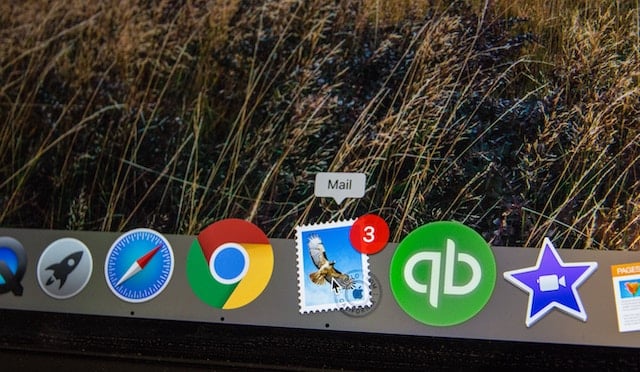Blogging can be tough. It takes time yet it works. If you're an inbound team of one, it can be even more difficult. How do you get the most bang for your buck when you don't have much time?

Being solely responsible for your company blog can feel overwhelming due to all the hard work that you put in while not having anyone to help share the burden. As a result, many small business owners just don’t blog. And by not blogging, you might just be putting yourself out of business. I'm an inbound team of one and solely responsible for our company blog. This is my strategy and approach for blogging by myself twice a week. In 1992, I made my first T-shirt quilt. I had developed an innovative design and method resulting in a very unique product. In 2003, I quit my day job and my new business went live - Too Cool T-Shirt Quilts.
I sure wasn’t looking for it, but somehow I stumbled onto HubSpot to help me with my website. I was sold on their website software because it was intuitive and I could run my site by myself. I ended up getting so much more than website software. It was Hubspot’s education that was a game changer for me. I went in just wanting to be able to change the pricing on my website and came out as an inbound marketer.
My website has to generate business for my location and my six other franchise locations. Because of the implementation of inbound marketing and blogging, the business is growing. But it is just me. I had to figure out how to do inbound marketing as a party of one. Blogging was one of the big steps.
Here are some steps you can take to help you blog more often, whether you're a team of one or even a team of ten.
Remember Why You Have to Blog
By blogging, you set yourself up as the expert in your field. You get to establish and direct the conversation about your products and/or services. The more you blog, the more search engine algorithms will consider you an expert and, as a potential result, rank your blog posts better.
I know that blogging works. I have one blog post that gets nearly as much traffic as my home page. That particular blog is nearly two years old. These results did not happen overnight. They came as a result of a good blog title, and from having established myself as an expert in my field.
Setting Up a Writing System
If you are the lone person responsible for writing the blog, there are ways to make it easier.
- Gathering and tracking blog ideas
Set up two folders on your computer’s desktop that are titled “Blogs” and “Blogs Topics”. The folder called “Blog” is where you store your published blogs. It's nice to have them in a convenient location (besides on your blog) if you need to reference them later.
The “Blog Topics” folder is where you can keep your ideas. Every time you have a new idea for a blog, open a Word document and type the title. If you have some points that you know you want to make, put those down too. Save this document until you need to write a blog. And then all you have to do is open the document and begin writing.
This is so helpful because you can gather blog topics as they come to you during your workday, get them written down and put away for later. One document for each title. I have 50 or more titles in my blog topic file at any one time. They are not all great, but at least you have a starting point.
- Write extra blogs during your company's slow time
Some businesses have slow periods during the year. Take advantage of those slower times by drafting, writing or publishing blogs, so that during the busy times you don’t have to do them. I have two slow periods during the year. During these two periods, I write and publish 90% of my blogs. It's nice not to have the stress of blogging when you are busy.
The huge advantage to writing a lot of blogs at once is that you get good at writing posts! Trust me, it makes all the difference. One month I wrote 45 blogs. I was in a blogging contest sponsored by Hubspot and won! I wrote a blog a day for 31 days in January. It was while I was writing all these blogs that I figured out how to blog efficiently. - Find a proofreader
Proofreading your own work is very difficult, so don’t do it. I print out my blogs and let my employees read and correct them. It's good to have another set of eyes on your content. Collectively, they do a great job. The added bonus is that they feel like they are more invested with the company. If you don't have employees or colleagues, look to family or friends. - Don’t worry if your blog posts aren't perfect
Keep in mind, some readers will only scan your blog posts and they are not your English professors. Having an error free blog is great, but one error free blog will do a lot less for you than 4 blogs with a typo or two. And if you catch a typo, you can always fix it.
Most people will either read right over the errors or will drop you an email telling you that you have an error. Those who take the time to email you corrections are awesome. You get to interact and talk to that visitor. Email them back with a heartfelt thank you and you are on the way to garnering another customer or maybe even an evangelist for your company. - Write away from the office
Try to go somewhere else to write other than at the office. At the office there are too many interruptions. Go to the library, coffee shop or home where you can turn off the interruptions. You will end up spending a lot less time writing overall.
Begin With the Title
When you are searching the internet, you are looking for answers to a question. The search engines try to find the most relevant results based on your search terms or question. You want your blog to be there ready to answer that question. If your blog title is the question being asked or contains the terms being searched, your blog will be deemed more relevant and thereby be ranked higher. So begin with the title.
- Blog topic/title generators
You can find a number of blog topic generators on the Internet. You are not the only one who has trouble coming up with things to write about. A few times a year, I spend time with various generators to produce a ton of blog titles. Blog topic generators are actually blog title generators. From the different titles you come up with, you can then write to answer the question or about the title. HubSpot has a Blog Topic Generator that is free to use. - Google or search every title or keyword focus
Before you begin writing, Google the title or your keyword focus that you plan to use. Begin typing your keyword or title into a search engine and see how Google (or another search engine) fills in what you type. Very important! If your title is too vague, Google will suggest other topics that are similar. Use those other topics as blog titles. You know that if Google is filling in the blanks for you, that there are people out there using those search terms.
Focus the Topic
The more specific you can make your blog posts the better. You might think that writing on a broad topic can help gain even more visitors, but that's not always the case. You want to be getting qualified traffic, so by addressing their specific problems you're creating better content. If you focus on a specific topic, chances are you'll have even more ideas for future blog posts.
- Write about what your audience needs to know
This is what you need to figure out. At first, I wrote about my company and what we could do for the visitor. But this is not the right approach. Write to educate your visitors about your products, and not the ones you sell but about the type of product in general. People are looking for information. Create content they are looking for. Content that addresses their problems. The more informative your blogs, the more visitors you will get. - Approach topics from different angles
You might feel like you are writing the same things over and over again. And you might be! I know that I am. But if you are rephrasing and using different examples, that’s okay. The only time this may be of concern is if you have a large following reading your blog every day. They won’t want to read the same type of content over and over. But if you have a large following, you mostly will be writing more timely type content.
Since I don’t have a large audience that reads my blog on a daily or weekly basis, I continuously blog about the same topic. Most likely your blog is out there to capture the visitors who searched a keyword that you wrote about. So don’t worry about being repetitive.
Blogging can feel scary when you think of everything that is involved. By remembering why you need to blog and then breaking it down into small steps and practicing, it can be less intimidating and you can be successful.
Are you an inbound team of one? How do you find time to do inbound marketing? Share your approach and questions in the comments section below.






![Plannuh Builds Product With the Customer at the Forefront [Customer Story]](https://53.fs1.hubspotusercontent-na1.net/hubfs/53/IMG_0128-3.jpg)
![How One HubSpot Customer Uses Pop-Up Forms and Workflows to More Intelligently Help Customers [Customer Story]](https://53.fs1.hubspotusercontent-na1.net/hubfs/53/inbound-lorax-ff7a59-light.jpg)


